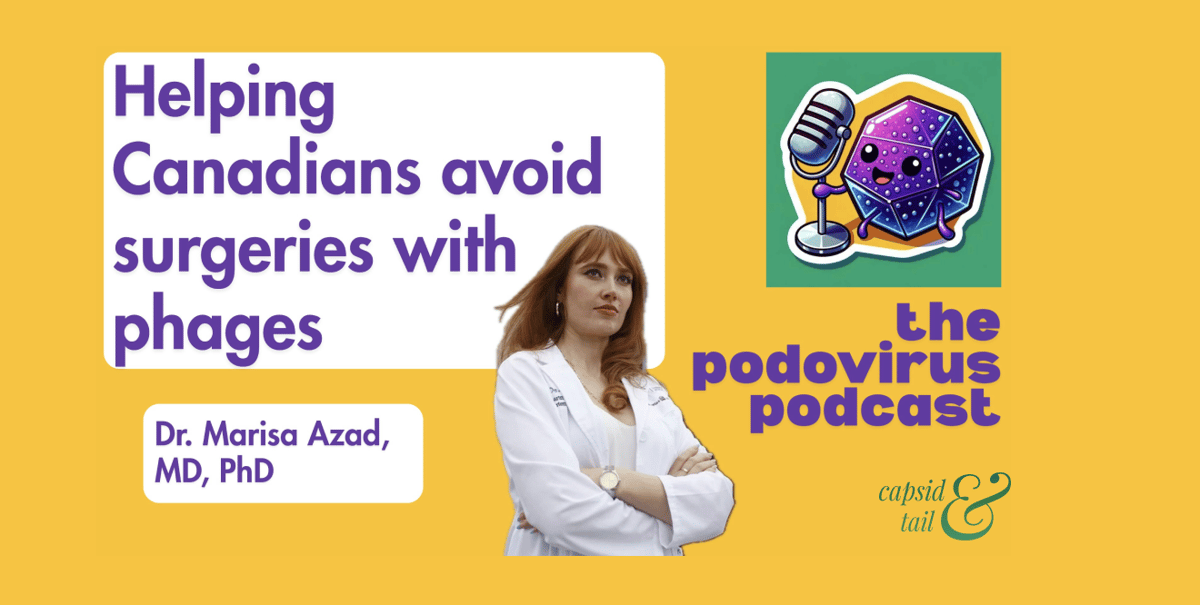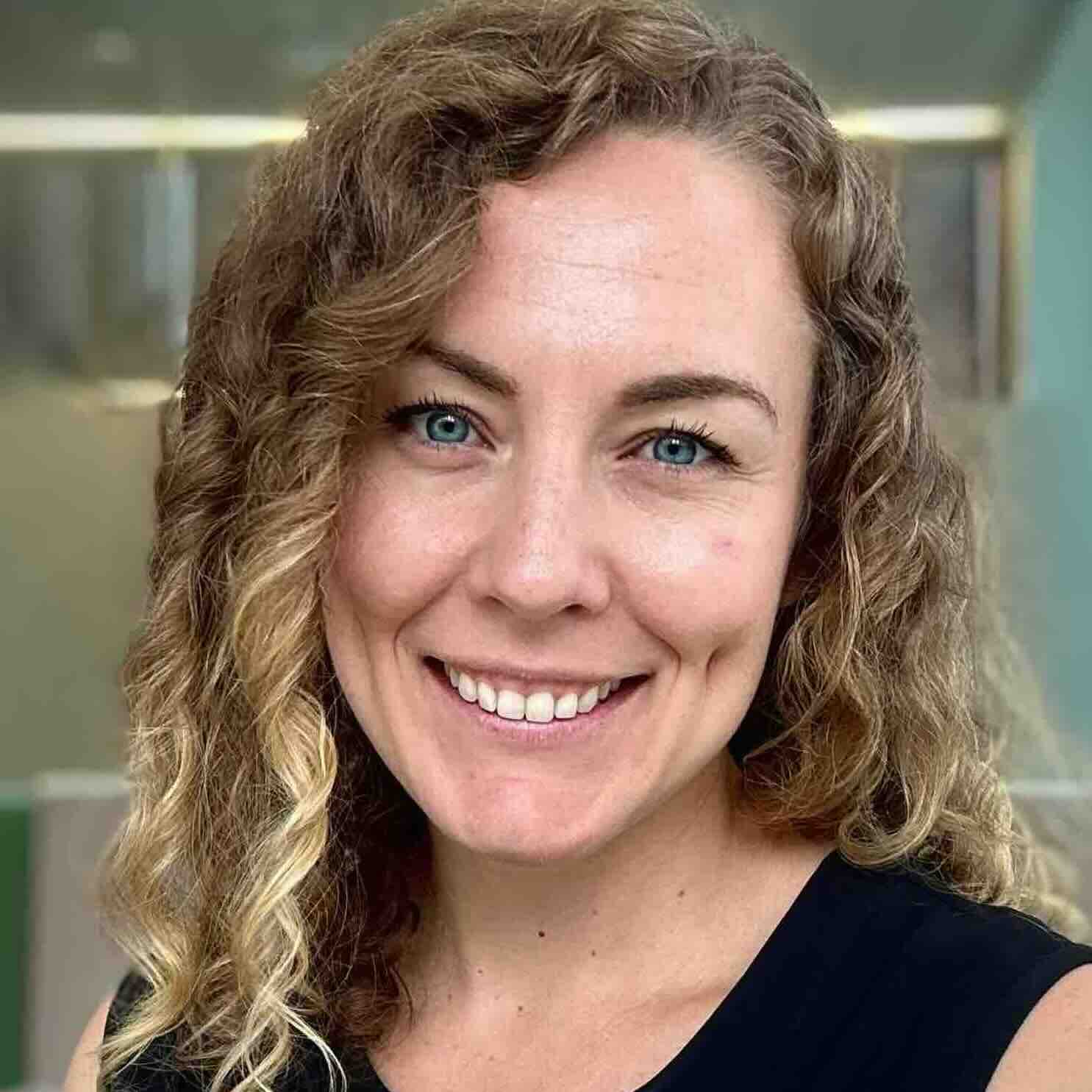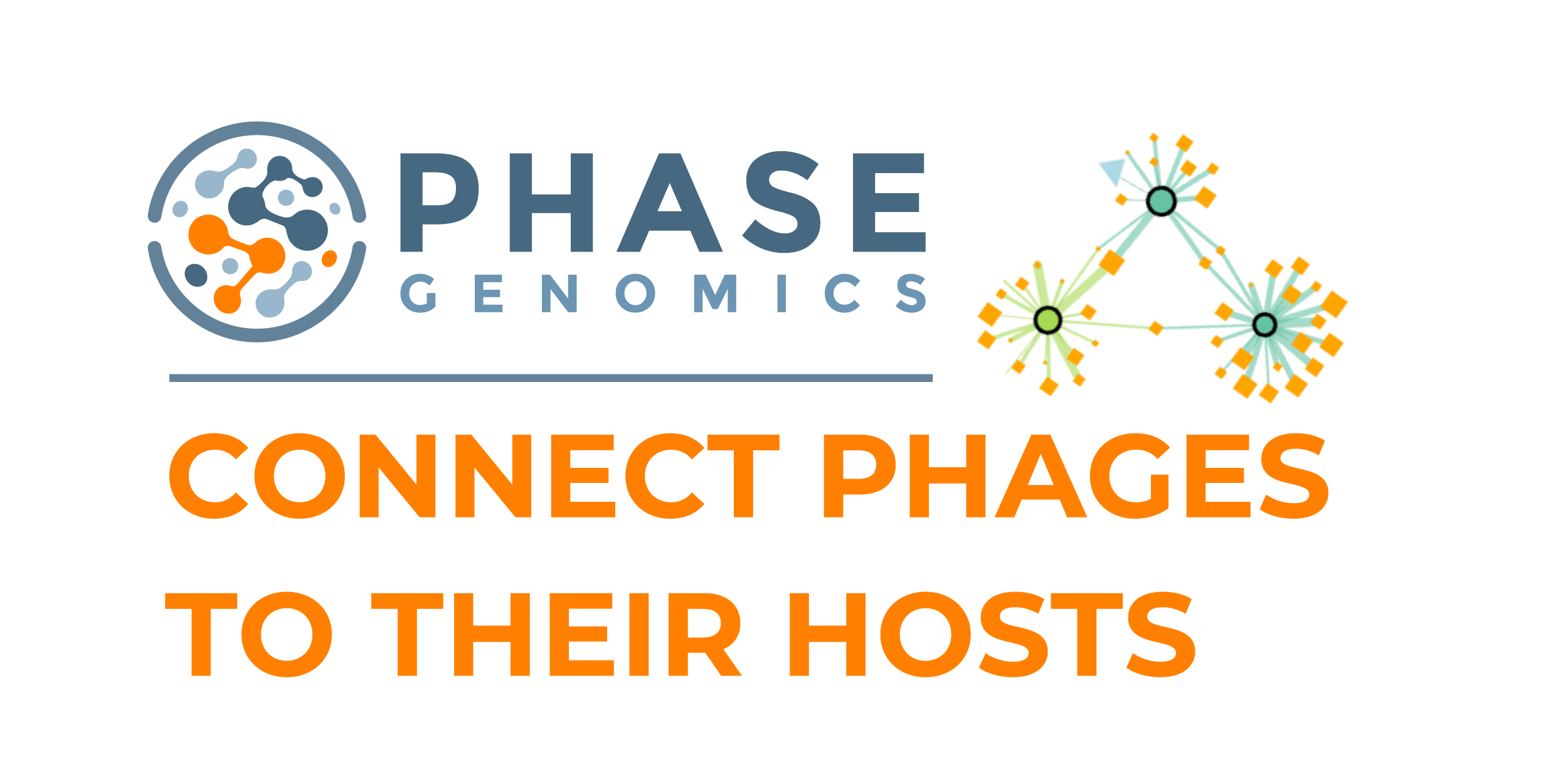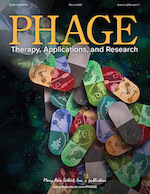As a Canadian living in the US, I’ve been watching phage therapy developments in Canada with particular interest for the last several years. When Dr. Marisa Azad made headlines (even my grandma sent me the links!) as the first physician to treat a bone infection with phage therapy in Canada, I was excited to one day talk to her.
Thanks to Bradley Cook at Cytophage, I got connected with Marisa, and was lucky enough to have her join as our most recent guest on the Podovirus podcast!
I have always been curious about what the regulatory landscape for phage therapy actually looks and feels like from a Canadian physician’s perspective. I was especially curious about the “N-of-1 trial” approach Marisa took for this case (which I blogged about last year ago out of curiosity), versus the compassionate use pathway we see in the US and elsewhere.
In this episode, Dr. Azad walks me through where some of the real challenges lie, the international collaboration she depended on to source the right phage (I was actually surprised to realize she’d indirectly used Phage Directory to send the alert that helped find phages for her patient!), and how she’s building reusable infrastructure so future physicians don’t have to navigate the same year-long process from scratch.
I hope you enjoy the conversation!
Highlights:
- Regulatory landscape insights: Health Canada (the ‘FDA of Canada’) proved supportive and scientifically informed, while local hospital ethics boards and administrative systems created the most significant delays.
- N-of-1 vs compassionate use: Dr. Azad chose the clinical trial route to create a platform for future patients, rather than treating each case as a one-off emergency.
- Global phage sourcing: She used the Phage Directory alert system to find her patient’s phage, which came from Slovenia and was prepared by Cytophage Technologies in Winnipeg — showcasing the international networks essential for personalized treatments.
- Balancing medicine, science, and art: we talked about careers, life, the creativity required to fit it all in, how we find fun in what we’re doing, and the drive to push boundaries so we can help patients.
A few snippets from the episode…
On regulatory realities:
“Health Canada has been excellent. They have really streamlined this process… They’re scientists. They’ve been very helpful. It’s really the local regulatory hurdles, which are the biggest challenge.”
On choosing the N-of-1 approach:
“I wanted to do a multi-center trial and use this as a platform for that, I wanted to go through the N of 1 or OLIP route or single patient trial route… it would make sense to go more of a clinical trial route if you want to keep going with this.”
On global collaboration:
“I literally Googled phage therapy companies and reached out to multiple companies around the world. And it was Cytophage that pulled through… The phage came from Slovenia. It’s a small world.”
On patient outcomes:
“This patient, thankfully, she has not had any relapses of infection. She has complete wound healing. There’s no drainage from the incision sites. She’s healthy. She has moved out of her home and she’s living independently.”
On field collaboration needs:
“Some of my colleagues who’ve been working in infectious diseases for 40 years, they’ve commented that the phage world, it’s kind of like HIV in the 80s and 90s, it’s a wild, wild west. And it’s really important that people work together.”
What’s next for phage therapy in Canada:
Dr. Azad is now leading a multi-center trial platform for phage therapy, expanding beyond orthopedic infections to treat endovascular infections, graft infections, and respiratory infections. Her team is investigating pharmacokinetics, delivery methods like hydrogels, and immune responses to phage therapy.
Meanwhile, momentum here is now building across Canada — just a couple weeks ago, another successful phage + bone infection case, this time in Calgary, made national news.
To me, it is finally becoming clear that Canada is getting on board with phage therapy, and I expect we’ll see continued cases and clinical trials! My grandpa, who’s been telling his doctors for years about phages and demanding why they won’t give them to him, will be thrilled.
— Jess
Listen to the full episode:
🎧 Spotify
🍎 Apple Podcasts
📺 YouTube
Learn more:







